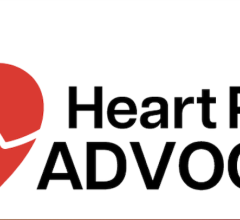
May 8, 2020 — Positive 12-month results were announced today from the PINNACLE FLX clinical trial assessing the safety and efficacy of the next-generation Boston Scientific Watchman FLX Left Atrial Appendage Closure (LAAC) Device for patients with non-valvular atrial fibrillation (NVAF). Presented as a late-breaking clinical trial at the Heart Rhythm Society (HRS) 2020 Science virtual meeting, the study evaluated performance of the Watchman FLX device as an alternative to oral anticoagulation therapy, including non-vitamin K antagonist oral anticoagulants (NOACs), for stroke risk reduction in patients with NVAF.
The prospective, non-randomized PINNACLE FLX trial included 400 patients in the U.S. with NVAF who were eligible for anti-coagulation therapy to reduce the risk of stroke but had an appropriate rationale to seek a non-pharmaceutical alternative. The trial met its primary safety endpoint – defined as occurrence of a major procedure-related complication within 7 days following the procedure or time of hospital discharge, whichever was later – with a low adverse event rate of 0.5 percent. The study also met its primary effectiveness endpoint, with data demonstrating a 100 percent rate of effective LAA closure at 12 months post-procedure with peri-device flow of less than 5 mm.
"We believe the next-generation Watchman FLX technology contributed to the excellent overall clinical performance seen in this study, notably the very low rate of safety events and high rate of effective closure," said Shephal Doshi, M.D., study co-principal investigator and cardiologist at Pacific Heart Institute at Providence St. John's Health Center, California. "In fact, we saw that 90 percent of patients showed absolutely no detectable leakage around the device at their 12-month follow up, which compares favorably to the rates of peri-device flow observed in the PROTECT-AF and PREVAIL trials with the predicate Watchman device and may translate into improved long-term clinical outcomes."
Data from the trial also demonstrated an implant success rate of 98.8 percent and that no patients experienced peri-procedural death, device embolization or pericardial effusion requiring cardiac surgery, all of which is favorable in the context of previous clinical studies.1 In addition, 96.2 percent of patients were able to discontinue oral anticoagulation following their 45-day follow up. Secondary endpoints from the PINNACLE FLX study, including the occurrence of ischemic stroke or systemic embolism, will be reported after 24 months of patient follow-up.
"As we have seen in previous clinical trials, Watchman technology is well-established as a safe and effective therapeutic option for patients with NVAF at increased risk for stroke and systemic embolism who need an alternative to a lifetime on anti-coagulant medications," said Ian Meredith, AM, global chief medical officer, Boston Scientific. "We are pleased with the performance exhibited by the next-generation Watchman FLX device in the PINNACLE FLX study, which mirrors positive European physician experience to date and underscores our commitment to advancing this technology for safe treatment of a broader population of eligible patients with NVAF."
The next-generation Watchman FLX device received CE mark in March 2019 and is designed to advance procedural performance and safety while expanding the treatable population of patients with NVAF. The new frame allows for optimal device engagement with the tissue for long-term stability and a faster, complete seal of the LAA. Its fully rounded design also offers physicians the ability to safely enter, and maneuver within, the LAA and to fully recapture, reposition and redeploy the device during the procedure. The Watchman FLX device is available in broader size options to treat a wide range of patient anatomies.
The company plans to further evaluate the Watchman FLX device for patients with NVAF via continued enrollment in the ongoing OPTION trial – comparing the device to oral anticoagulants in patients who also undergo a cardiac ablation procedure – as well as in the CHAMPION-AF clinical trial, which will study a broader anticoagulant-eligible patient population to evaluate the device against NOACs for embolic stroke prevention.
The Watchman FLX LAAC Device is an investigational device in the U.S. and not available for sale.
Find links to all the Heart Rhythm Society 2020 Late-Breaking Clinical Trials in Electrophysiology
For more information: www.watchman.com


 March 31, 2025
March 31, 2025 







